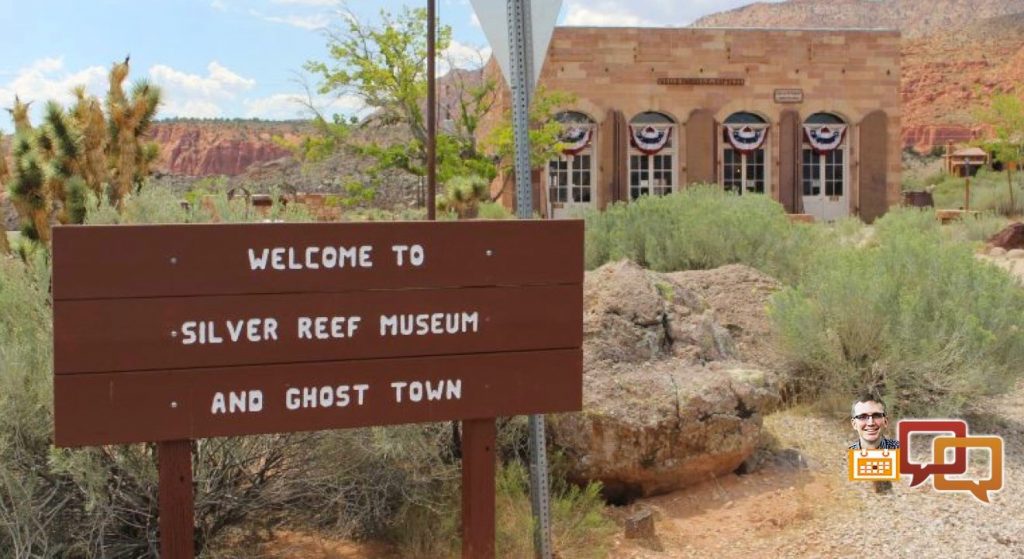
FEATURE – Silver Reef is not a normal ghost town.

Unlike most ghost towns of the West, it is not in a remote location away from civilization. Instead, civilization has encroached upon it. For instance, today, there are newly-constructed houses just up the street from the only building still completely intact from its heyday.
While most of its original buildings lie in ruins or have left no trace, some of its buildings are now in other locations and materials from its buildings were used in the construction of other structures throughout the county.
But what makes it the most unique is what started the town – the discovery of silver in sandstone, the only place in the United States that can claim that distinction.
Geologists aren’t even sure how the silver chloride got into the sandstone and call it a miracle, Bobbi Wan-kier, Silver Reef’s Museum Director, said. There are three different theories on how the silver became entombed in the sandstone, an onsite plaque states. These include a volcanic theory, that mineral laden waters derived from molten rock at the Pine Valley Mountains’ core deposited it in the porous sandstone; a sedimentary theory, that eroded silver particles were deposited there through water action; and a groundwater theory, that silver in the water was deposited via faults or fractures.
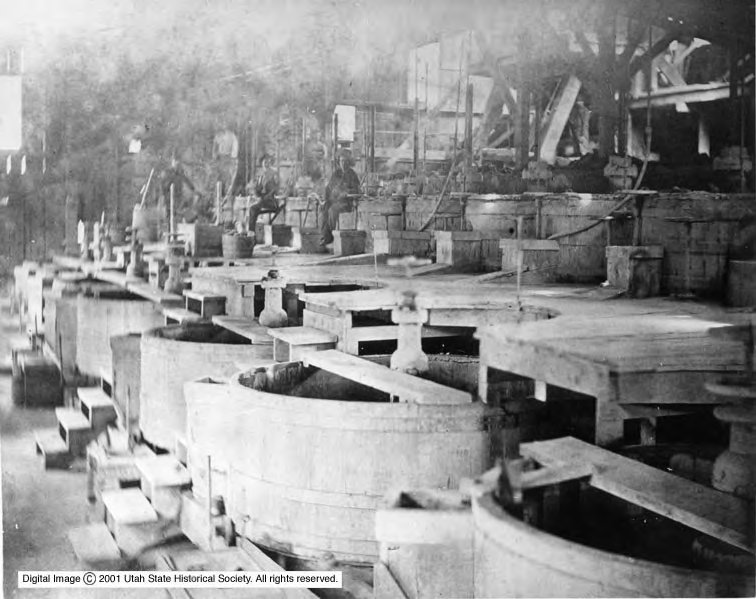
However it got there, the trouble it posed for potential miners was that it wasn’t pure silver but silver chloride that needed refinement.
Just as no one is sure how the silver got there, no one is sure just how the silver was discovered. Five different stories persist. The most accepted one is that a man by the name of John Kemple found it in 1866, and no one believed him, feeling it was impossible that silver could be found in sandstone. In the early 1870s, some Salt Lake City bankers, the Walker brothers, sent their agent William Barbee to investigate. He brought back some of the silver chloride to be processed and it was determined it was high enough quality to make it worth mining.
Barbee soon staked some claims and established a settlement in 1875 built around those claims and named it Bonanza City. However, he set his lot prices too high so potential miners squatted on land north of the claim and called their area Rockpile.

Investors like the Walkers were responsible for propaganda to get businesses catering to the town to support the miners and the mines themselves, Wan-kier said.
The town was eventually named Silver Reef because of the silver found in the nearby white sandstone reef and it benefited from the failing mines in Pioche, Nevada. Approximately one-third of the population of Pioche moved to Silver Reef in 1878, Wan-kier said, an advantage to the new town as it gained the older town’s personnel and equipment, including stamps used to crush the ore.
Four main companies set up shop and milled the silver near the mines, including the Walker and Barbee, Christy, Leeds and Stormont companies.
Silver Reef became an anomaly in Washington County. In a religious place that put a high priority on marriage, the 1880 Census reported that of the 1,013 who lived in the town, 459 were single men – meaning there were more single men in Silver Reef than in the rest of the county combined.

The town also contained more diversity than the rest of the county with 51 Irish and 50 Chinese on the census rolls, nationalities found nowhere else in the county, Doug Alder and Karl Brooks reported in their book about Washington County’s history.
Even though Mormon leaders feared the worldliness that a perceived raucous mining town might introduce to the community, Silver Reef, overall, became a boon to the local economy and brought an infusion of much-needed hard-currency as well as a willing market for local products, including produce from nearby farms. Additionally, the restaurants of Silver Reef employed young women from the surrounding towns.
Apostle Erastus Snow of The Church of Jesus Christ of Latter-day Saints reportedly thanked the Lord over the tabernacle for the indirect benefit the mines had on the local population.
“Silver Reef brought temporary prosperity to an area chronically depressed,” the Historical Register nomination form for the Wells Fargo Express Building stated.
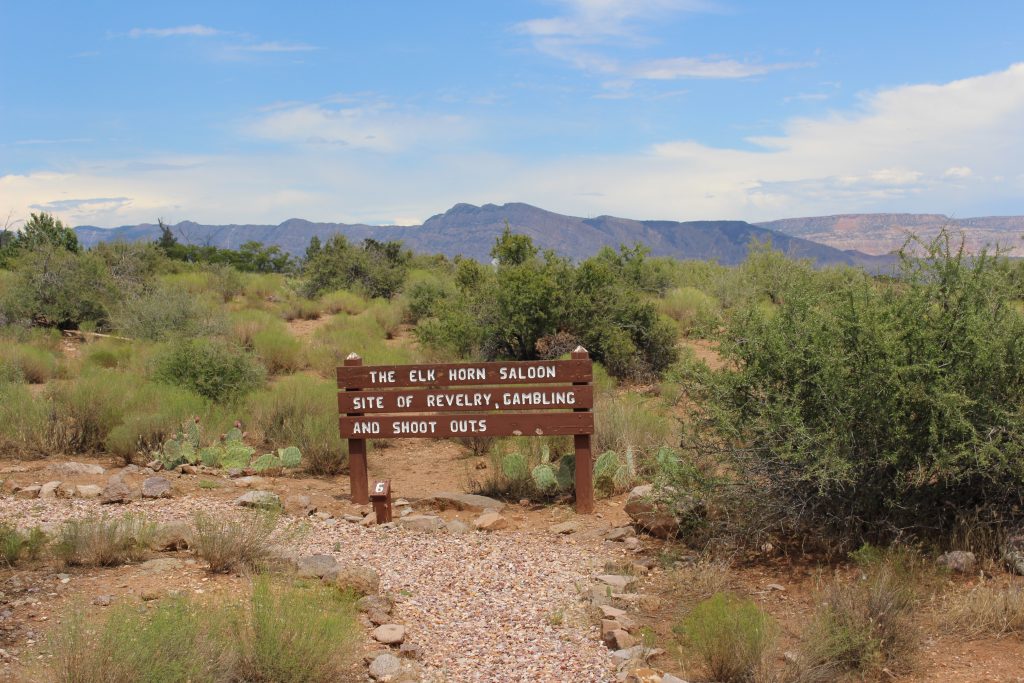
Without the advent of Silver Reef, southwestern Utah’s settlers would not have had enough capital to complete major infrastructure improvements, especially those dealing with water, Wan-kier said.
Silver Reef also became an impetus for Mormon settlers to file for title to the lands they had already occupied for years. As miners were filing for their mining claims, Alder and Brooks wrote, church leaders were prompted to encourage members to secure their own land through formal filings with the government.
In her mind, Wan-kier said, Silver Reef was actually tame compared to other silver mining towns and didn’t really have a red-light district.
There actually was a lot of interaction between the gentile Silver Reef residents and the Mormons of the surrounding towns. There were horse races for entertainment and a lot of dances in the boomtown; but, not surprisingly, Wan-kier said, fathers didn’t like their daughters to attend those.

“It wasn’t all working and playing cards,” she said.
The local Mormons and the Catholics of Silver Reef were not hostile to each other. One curious event between the two religions happened due to a friendship forged between the local Catholic priest, Lawrence Scanlan, and John Macfarlane, the St. George LDS Tabernacle Choir director. Scanlan wanted to hold high mass but his church was unfinished and he didn’t have a choir. Macfarlane proposed to and received permission from Snow and St. George LDS stake president John McAllister for the Catholic mass to be celebrated in the St. George tabernacle with its 30-voice choir supplying the music in Latin, which took the choir two weeks of practices to learn. The mass took place on May 25, 1879, with nearly as many Catholics as curious Mormons in attendance, Alder and Brooks wrote.
“I think you are wrong and you think I am wrong,” Scanlan is reported to have said at the start of the event, “but this should not prevent us from treating each other with due consideration and respect.”

An Irish immigrant himself, Scanlan was one of the most respected citizens of the rough-and-tumble mining town and arguably did the most to make life better for its residents.
Scanlan was instrumental in establishing a school, hospital and church, named St. John’s. Legend has it that he received major financial support to construct the structures from gambling houses and other unsavory places.
One place in town that could have been considered unsavory was the Elkhorn (or Elk Horn) saloon, where owner George Miller provided guests with free salty foods at the bar so they’d spend more on drinks. There are several tales of shootouts happening in front of the saloon.
“A few steps to the east of the Elkhorn Saloon was the jail, a handy arrangement since the saloon often served as a courtroom and helped keep the jail in business,” the museum’s interpretive trail guide states.
The town had three cemeteries – one Catholic, one Protestant and one Chinese. The previous two remain, Wan-kier said, but the Chinese one does not as their bodies were exhumed and returned to China because “their ancestors needed to rest in their homeland.”

Silver Reef’s Chinese residents built their own little Chinatown on the south side and helped keep the mines going. Wan-kier said she can’t understand why there was so much prejudice against them, perhaps because they outworked other residents.
As with most mining towns of the Old West, Silver Reef was doomed to die and did so because the deeper the drills and dynamite went, the poorer the quality of the ore. Production costs soared, prompting cost-cutting measures from the mining companies, which didn’t sit well with miners who had first struck and then started leaving. The mining companies brought in inexperienced miners, who were not productive and by 1891 all the mines had shut down.
Several different attempts by later mining interests tried to revive the mines, most recently in the 1950s with the Western Gold and Uranium Company, which used the Wells Fargo building as an office, and in the 1970s by the 5-M Company. But all those attempts were short-lived and failed.
Due to safety concerns, the Utah Division of Oil, Gas and Mining closed off many old mine shafts in the late 1990s.

By 1903, when mining operations had ceased, the town’s buildings became the town’s new “gold,” Wan-kier said, and were either moved to different locations or dismantled and repurposed into other buildings. For instance, the Silver Reef school was moved to Leeds and served as that town’s school for over 50 years. Today, it is the Leeds Town Hall and some of the stone from the buildings was used in the construction of structures for the Leeds CCC Camp. The town’s billiard tables were even made into chairs for the county courthouse, she said.
“When someone began to tear down one of Silver Reef’s shacks, he found a cache of several thousand dollars in gold and silver beneath its floors,” the Wells Fargo building’s nomination form stated. “A second rush was on, resulting in the destruction of nearly all Silver Reef’s old frame buildings.”
The one building that remains intact and restored in its original location is the Wells Fargo Express office. It also served as the Woolley, Lund and Judd Store as well as a stagecoach stop.

The Wells Fargo building was placed on the National Register of Historic Places in 1971. It is one of the oldest and best-preserved Wells Fargo Express offices in the nation, Wan-kier said, and was the only building to survive an 1879 fire on its side of the street.
Noted western sculptor Jerry Anderson and his wife, Fawn, helped restore the Wells Fargo building in the early 1980s and fashioned one side of it into an art gallery and the other into a museum detailing Silver Reef’s mining history. The Andersons operated it in this condition from 1986 to 2010.
Jerry Anderson said he was eating in Wes Sullivan’s restaurant and Sullivan noticed he was wearing a Wells Fargo belt buckle and asked Anderson if he liked Wells Fargo. Sullivan then took Anderson on a little field trip to see the Wells Fargo Express Office.

The Andersons fell in love with the location. In 1978, they purchased property next to the Wells Fargo building, built a home there and moved in, in 1981 after Jerry Anderson retired from the steel business. They and several other local residents helped restore the Wells Fargo building to near its former glory, mostly through charitable donations and a few grants.
“They saw the vision and put up their own money to restore it,” Anderson said of the donors, noting that it cost approximately $120,000 in early 1980s dollars to complete the restoration.
Around the same time period, Bob Carpenter restored the Rice Bank to the south and the late Glen Morgan reconstructed the Cosmopolitan Restaurant on the exact location where it was before. Anderson said neither Carpenter nor Morgan have a family connection to Silver Reef, they just wanted to see it rise again.
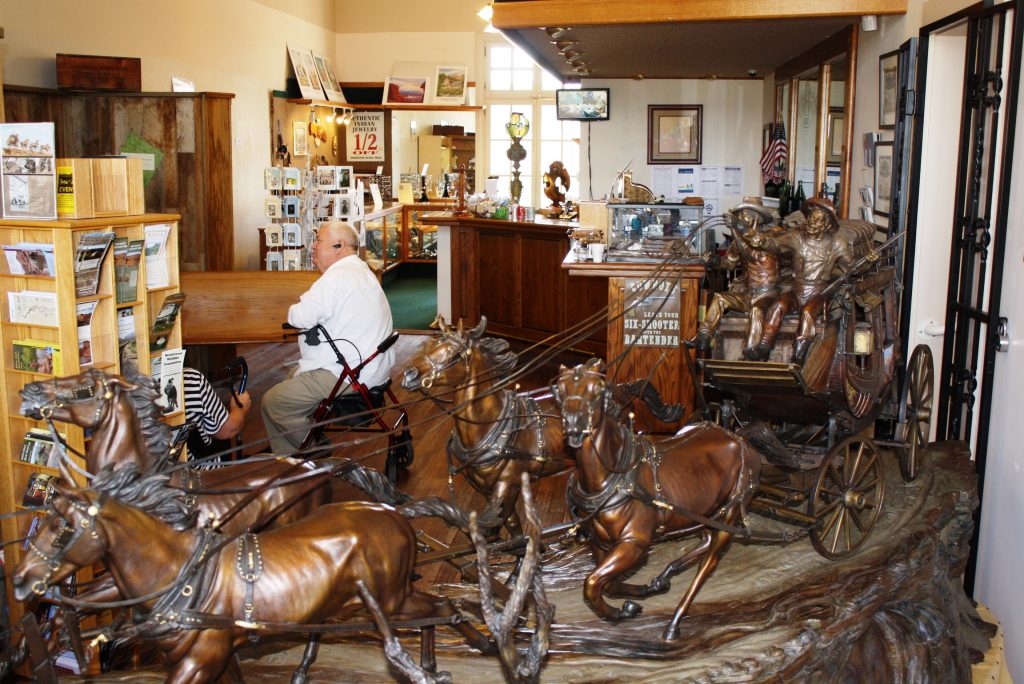
Anderson is no longer a part of the museum’s day-to-day operations but has helped with steelwork on the museum’s doors and handles as well as a sculpture of a miner for its mine display in the museum’s basement.
Silver Reef has been an ideal, peaceful place to be an artist, Anderson said.
“It’s a jewel in the desert,” he said.
Visiting Silver Reef
Silver Reef stands approximately 18 miles north of St. George and 37 miles south of Cedar City off Interstate 15.
Traveling north, take Exit 22 and drive northeast on Main Street through downtown Leeds then make a left onto Silver Reef Road; traveling south, take Exit 23 to Leeds and Silver Reef, make a right onto Silver Reef Road.

Once on Silver Reef Road, travel west toward the Pine Valley Mountain Range.
The museum displays relics of Silver Reef’s past as well as period artifacts, along with pictures and background of the town’s significant residents. One of the museum’s most notable artifacts is the original Wells Fargo safe.
The museum also provides a walking tour guide that leads visitors on a trail around Silver Reef’s most significant sites. One of the Silver Reef Museum’s greatest assets is its staff. Most of its enthusiastic docents live in the Leeds area and take a lot of pride in the area’s history, Wan-kier said. They are available to lead tours and answer any visitor questions.
The Silver Reef Museum is open Monday, Thursday and Saturday from 10 a.m. to 3 p.m. For more information on the museum, visit its website.
Click on photo to enlarge it, then use your left-right arrow keys to cycle through the gallery.
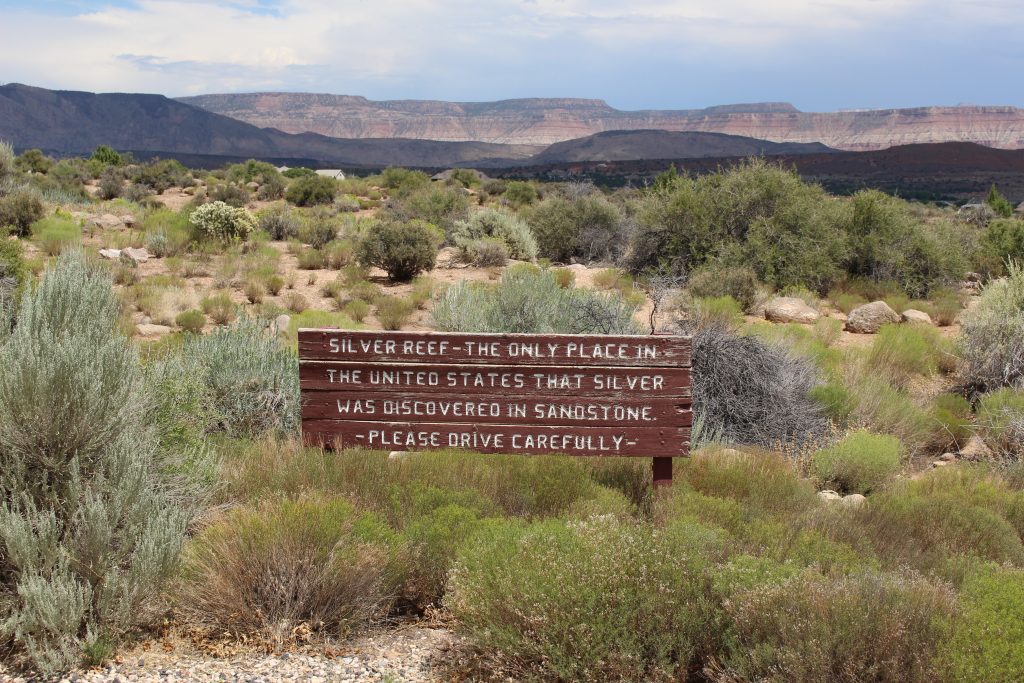
The sign declaring Silver Reef's main distinction - the only place in the U.S. silver has been found in sandstone, Silver Reef, Utah, July 31, 2017 | Photo by Reuben Wadsworth, St. George News

This historic photo shows a portion of Silver Reef's mile-long Main Street, Silver Reef, Utah, 1880 | Photo courtesy of Utah State Historical Society, St. George News
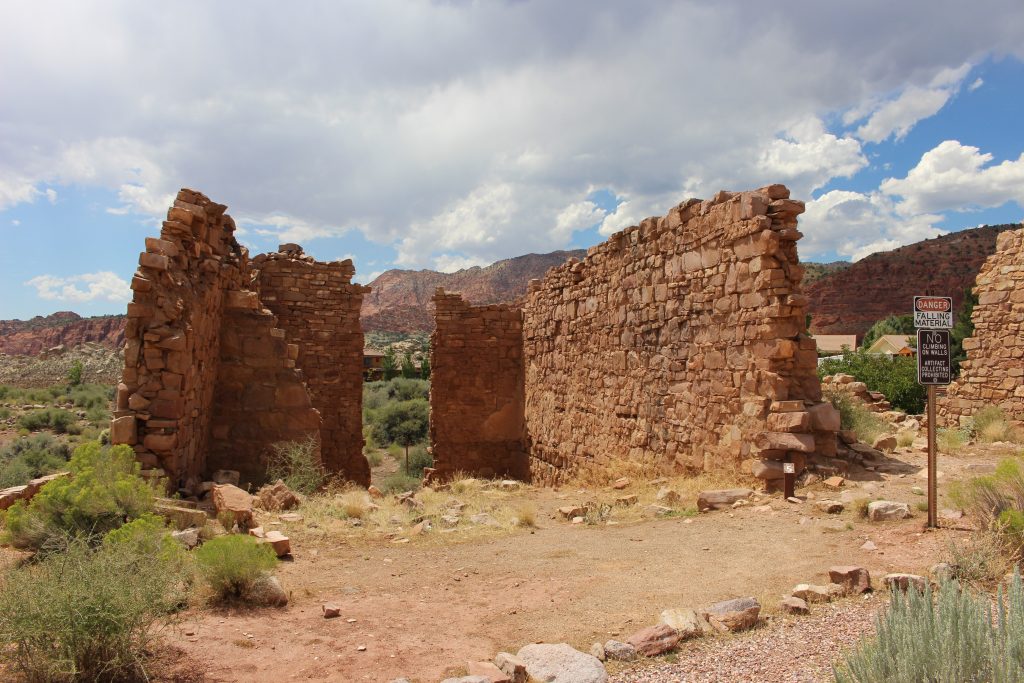
The ruins of various Main Street businesses from Silver Reef's mining heyday in the late 1870s and early 1880s, Silver Reef, Utah, July 31, 2017 | Photo by Reuben Wadsworth, St. George News
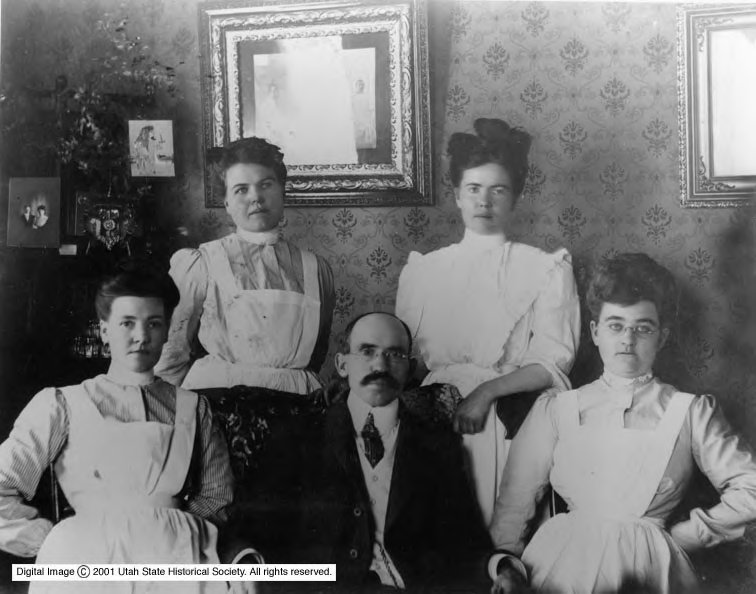
This historic photo depicts Mr. Gramb and the employees of his boarding house, which operated in Silver Reef, Utah, circa 1880-1890 | Photo courtesy of Utah State Historical Society, St. George News

This historical photo shows the Savage Shaft of the Stormont Mine, one of the four mining companies to build mills in Silver Reef, Utah, circa 1880-1890 | Photo courtesy of Utah State Historical Society, St. George News

This historic photo shows Elk Horn Saloon and James N. Louder's store in Silver Reef, Utah, circa 1880-1890 | Photo used by permission courtesy of Utah State Historical Society, St. George News

Sign marking the site where the Elkhorn Saloon once stood, Silver Reef, Utah, July 31, 2017 | Photo by Reuben Wadsworth, St. George News

Silver Reef's old jail, recently returned to the site in June 2017, stands across the street from the Silver Reef Museum, Silver Reef, Utah, July 31, 2017 | Photo by Reuben Wadsworth, St. George News
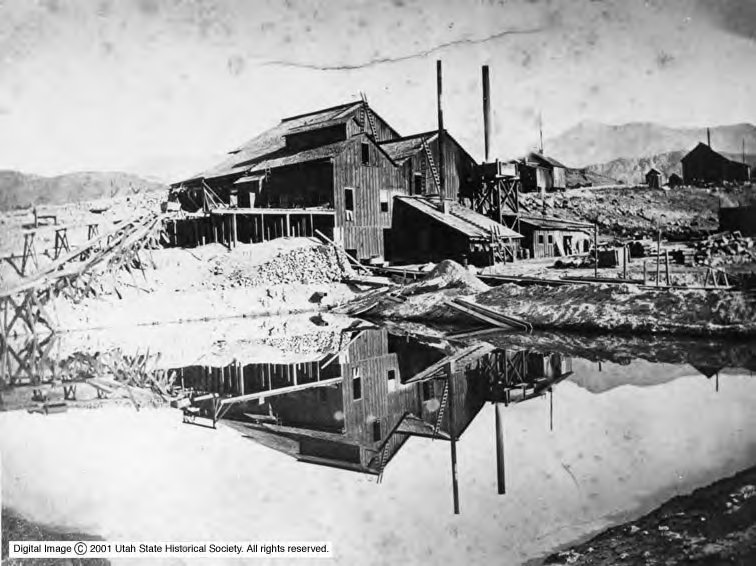
This historic photo shows the Christy Silver Mining Company's mill in Silver Reef, Utah, circa 1880-1890 | Photo courtesy of Utah State Historical Society, St. George News

The reconstructed version of the Rice Bank, which sits south of the Wells Fargo Express building, so named because John H. Rice, who came from Pioche, established it, Silver Reef, Utah, July 31, 2017 | Photo by Reuben Wadsworth, St. George News

This historical photo depicts silver being processed in the Walker and Barbee Mill, Silver Reef, Utah, circa 1880-1890 | Photo courtesy of Utah State Historical Society, St. George News
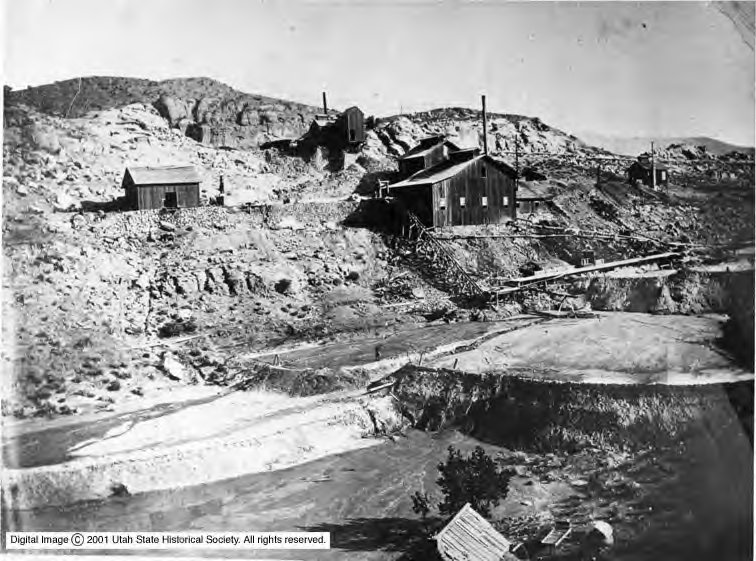
This historic photo shows the exterior of the Walker and Barbee Mill, one of four mills to exist during Silver Reef's mining heyday, Silver Reef, Utah, circa 1880-1890 | Photo courtesy of Utah State Historical Society, St. George News

This historic photo shows the original Cosmopolitan Restaurant along Silver Reef's Main Street. The one visitors see today is a reconstruction, Silver Reef, Utah, circa 1880-1890 | Photo courtesy of Utah State Historical Society, St. George News

The reconstruction of the Cosmopolitan Restaurant, up the street north of the Silver Reef Museum, Silver Reef, Utah, July 31, 2017 | Photo by Reuben Wadsworth, St. George News

This historic photo shows Sam Wing, a Chinese worker in Silver Reef, Utah, circa 1880-1890 | Photo courtesy of Utah State Historical Society, St. George News

Plaque commemorating the life and work of Father Lawrence Scanlan, Silver Reef's Catholic Priest responsible for building a church, hospital and school, Silver Reef, Utah, July 31, 2017 | Photo by Reuben Wadsworth, St. George News
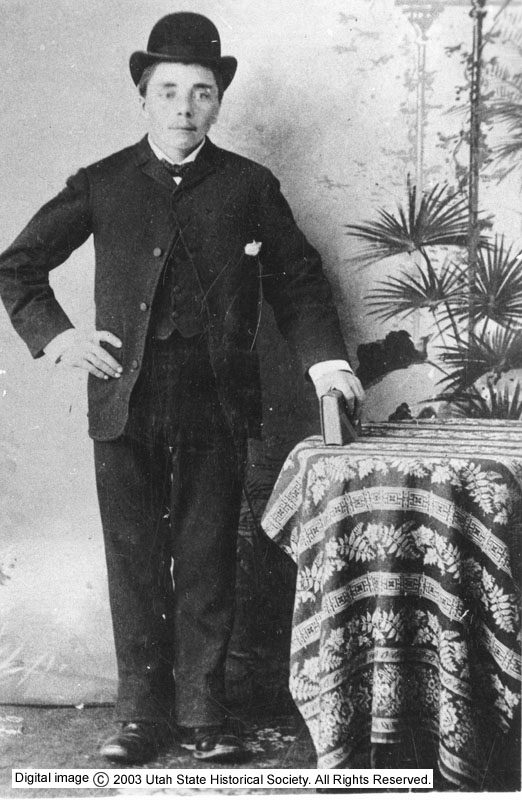
This historical photo shows Irish immigrant Tim Quirk, who worked in Silver Reef, Utah, circa 1880-1890 | Photo courtesy of Utah State Historical Society, St. George News
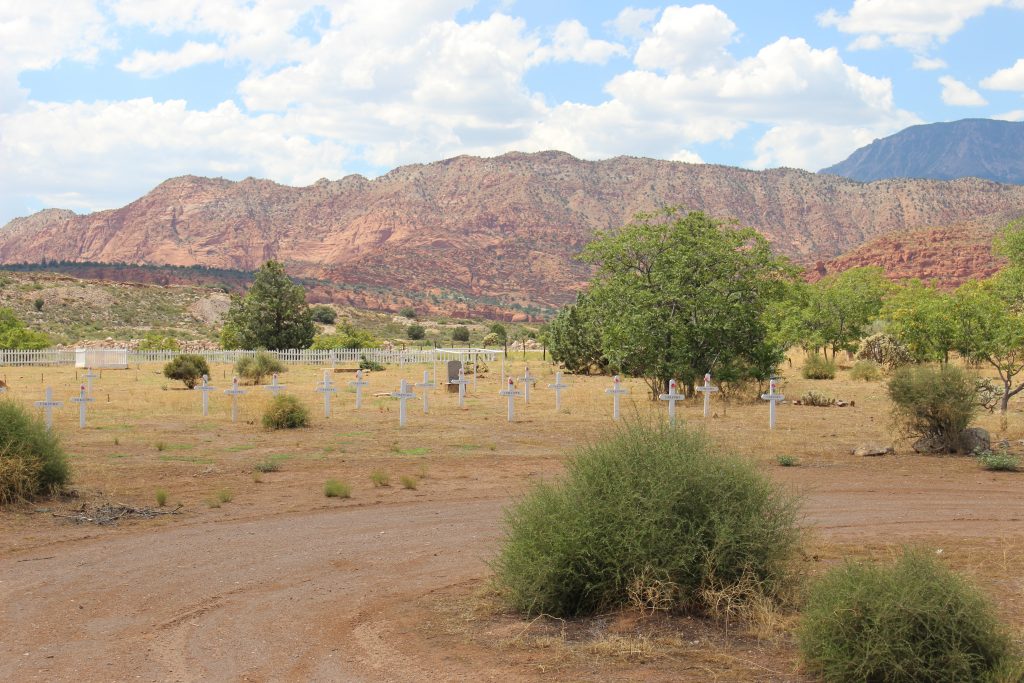
The Silver Reef cemetery, separated into Protestant and Catholic sections, as it looks today, Silver Reef, Utah, July 31, 2017 | Photo by Reuben Wadsworth, St. George News
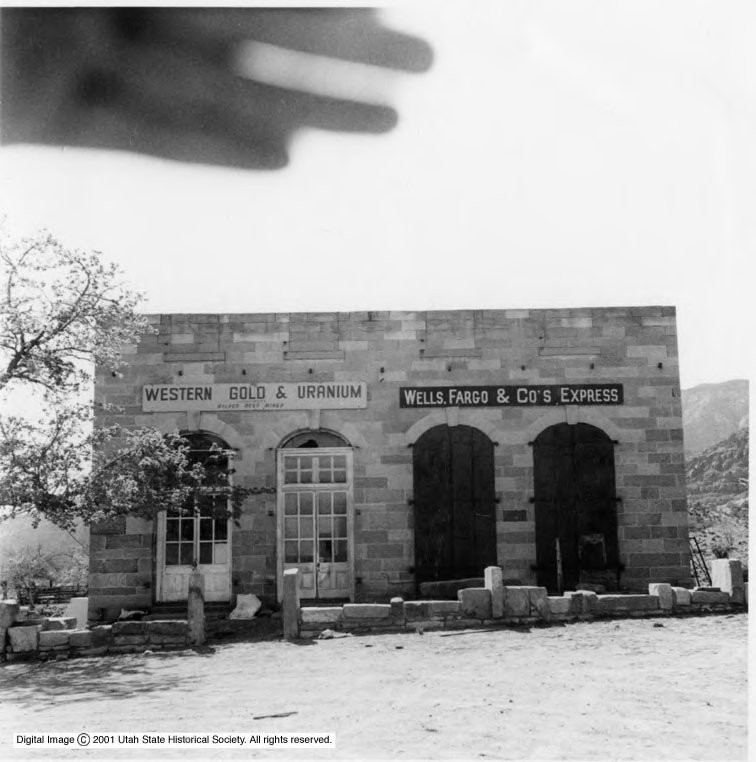
This historical photo shows the Wells Fargo Express Office when it was used as an office by Western Gold and Uranium Company, in its attempt to revive the mines in the 1950s, Silver Reef, Utah, April 1963 | Photo courtesy of Utah State Historical Society, St. George News

Silver Reef's Wells Fargo Express Building as it looks today as the Silver Reef Museum, Silver Reef, Utah, July 31, 2017 | Photo by Reuben Wadsworth, St. George News
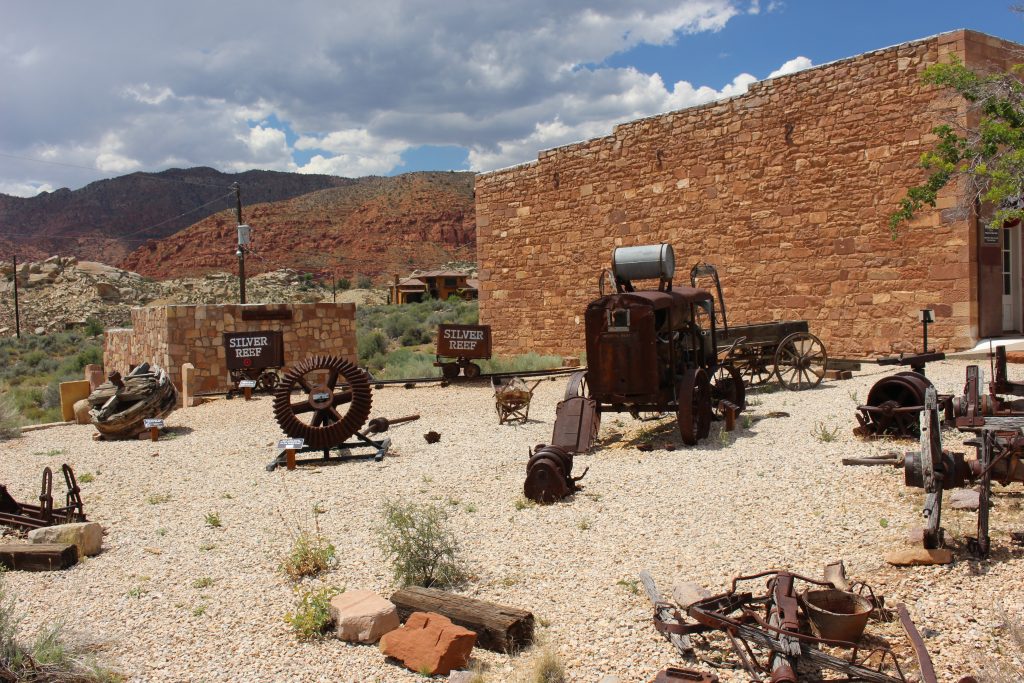
Old silver mining implements, including ore cars, on display to the south of the Silver Reef Museum, Silver Reef, Utah, July 31, 2017 | Photo by Reuben Wadsworth, St. George News

The Powder House, a reconstruction of a building used to house explosives sits in back of the Wells Fargo Express Building with old mining implements on display among the grounds, Silver Reef, Utah, July 31, 2017 | Photo by Reuben Wadsworth, St. George News
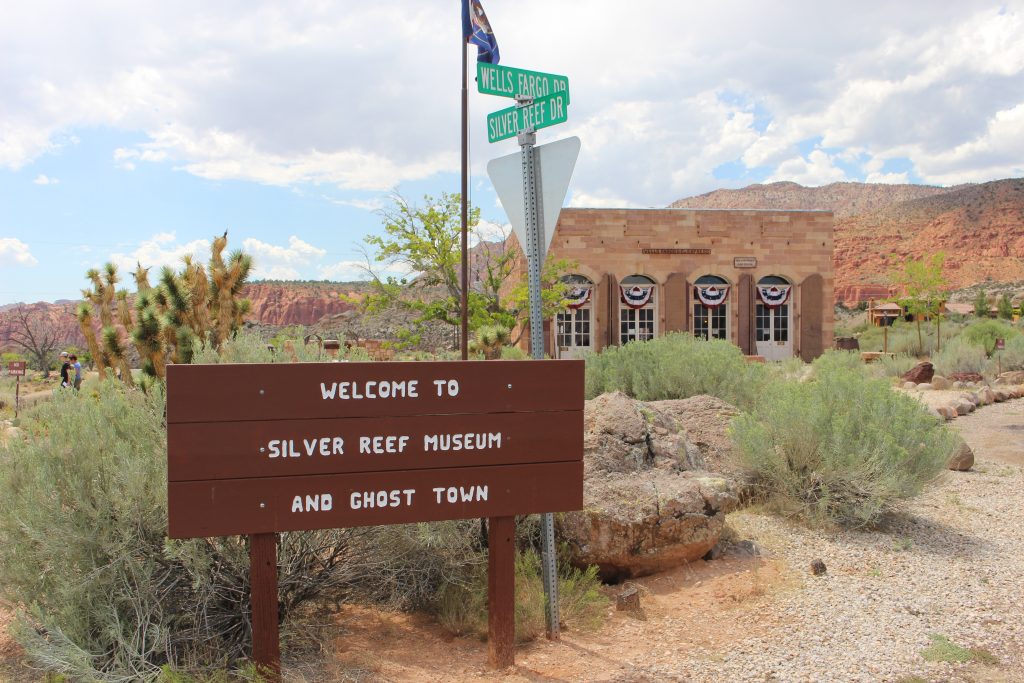
The sign welcoming visitors to Silver Reef with the old Wells Fargo Express, now the Silver Reef Museum, in the background, Silver Reef, Utah, July 31, 2017 | Photo by Reuben Wadsworth, St. George News
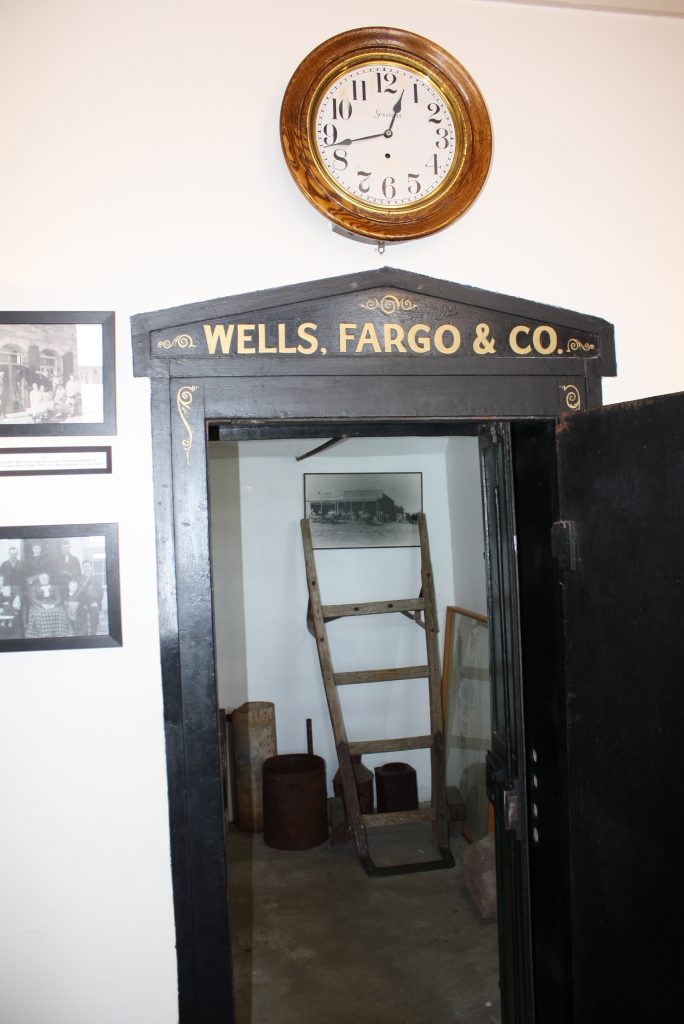
The old Wells Fargo safe in the Wells Fargo Express building, which is now the Silver Reef Museum, Silver Reef, Utah, August 10, 2015 | Photo by Reuben Wadsworth, St. George News
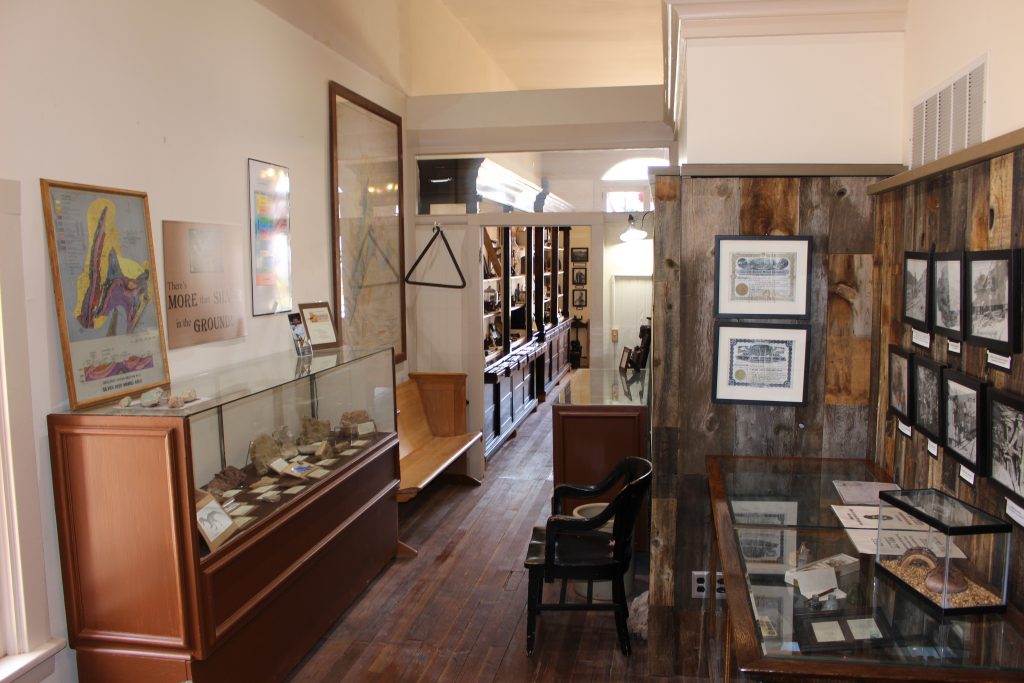
Displays at the Silver Reef Museum as seen from the back of the building, Silver Reef, Utah, July 31, 2017 | Photo by Reuben Wadsworth, St. George News

The interior of the Silver Reef Museum, which displays relics from Silver Reef's heyday as well as other period artifacts, Silver Reef, Utah, July 31, 2017 | Photo by Reuben Wadsworth, St. George News

Sculpture of a stagecoach and its team in the gift shop side near the entrance of the Silver Reef Museum, Silver Reef, Utah, August 10, 2015 | Photo by Reuben Wadsworth, St. George News
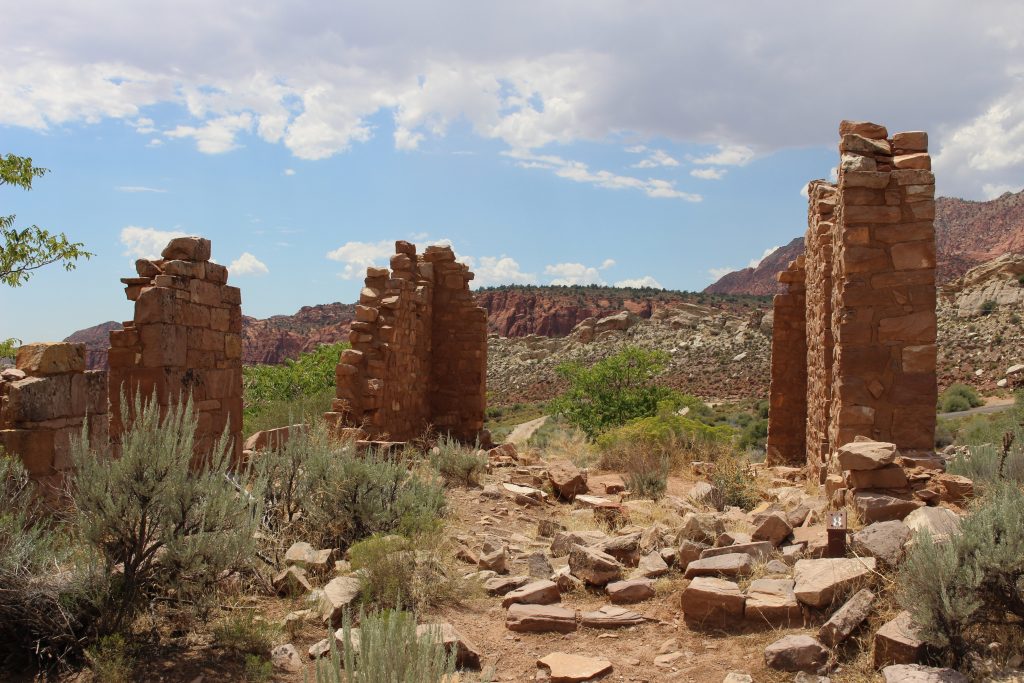
The ruins of the home originally owned by Captain Henry S. Lubbock, whose wealth made it one of the "most beautifully built" homes in Silver Reef, the Interpretive Trail Guide states, Silver Reef, Utah, July 31, 2017 | Photo by Reuben Wadsworth, St. George News
About the series “Days”
“Days” is a series of stories about people and places, industry and history in and surrounding the region of southwestern Utah.
“I write stories to help residents of southwestern Utah enjoy the region’s history as much as its scenery,” St. George News contributor Reuben Wadsworth said.
To keep up on Wadsworth’s adventures, “like” his author Facebook page or follow his Instagram account.
Wadsworth has also released a book compilation of many of the historical features written about Washington County as well as a second volume containing stories about other places in Southern Utah, Northern Arizona and Southern Nevada.
Read more: See all of the features in the “Days” series
Email: [email protected]
Twitter: @STGnews
Copyright St. George News, SaintGeorgeUtah.com LLC, 2020, all rights reserved.
